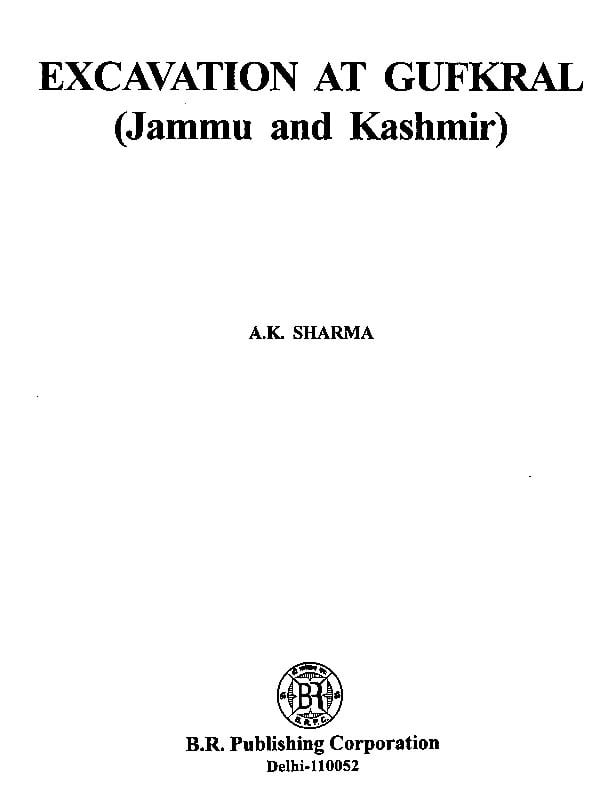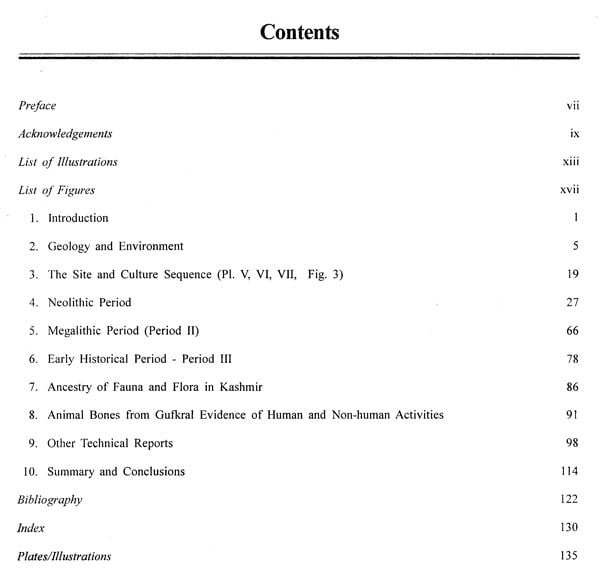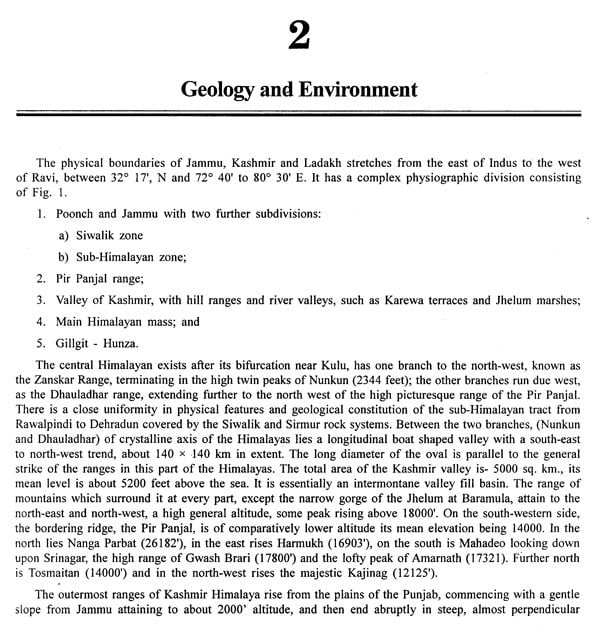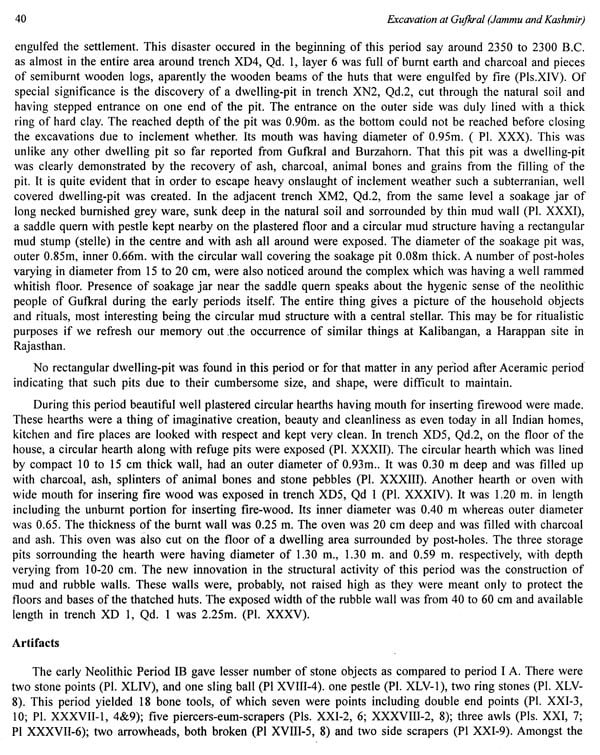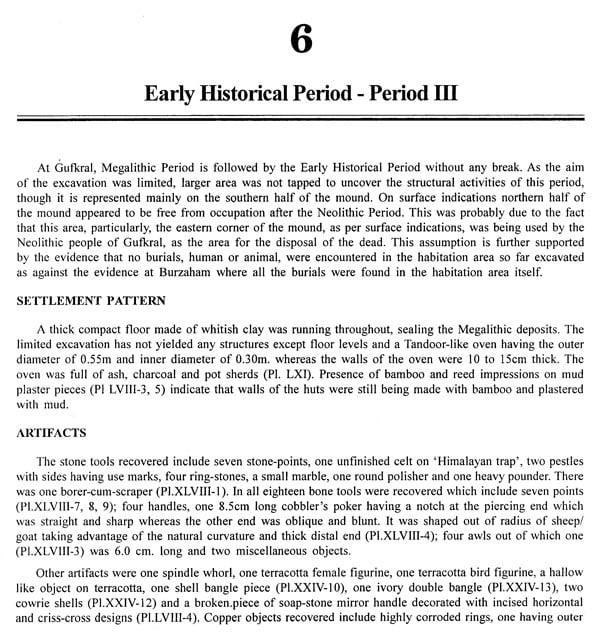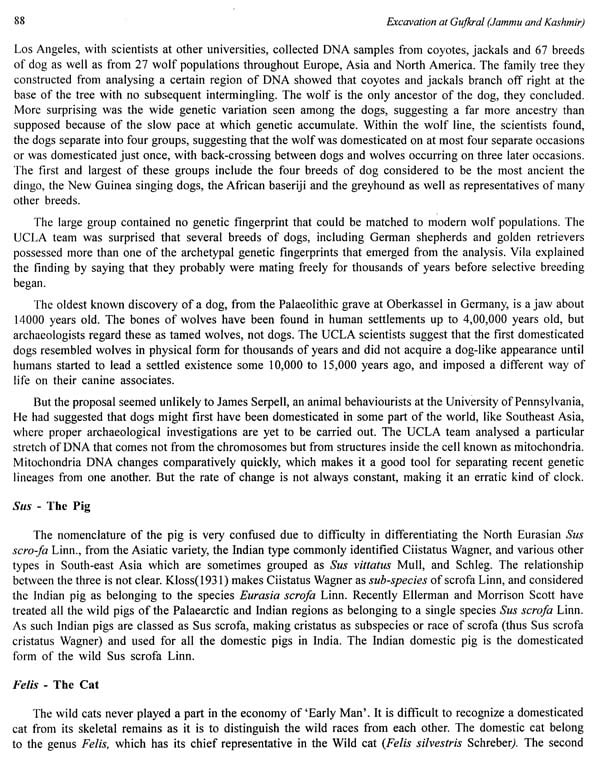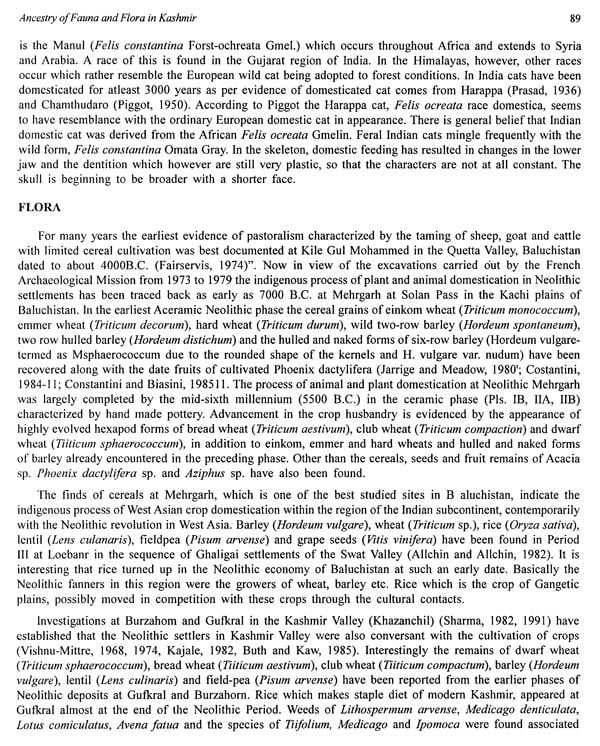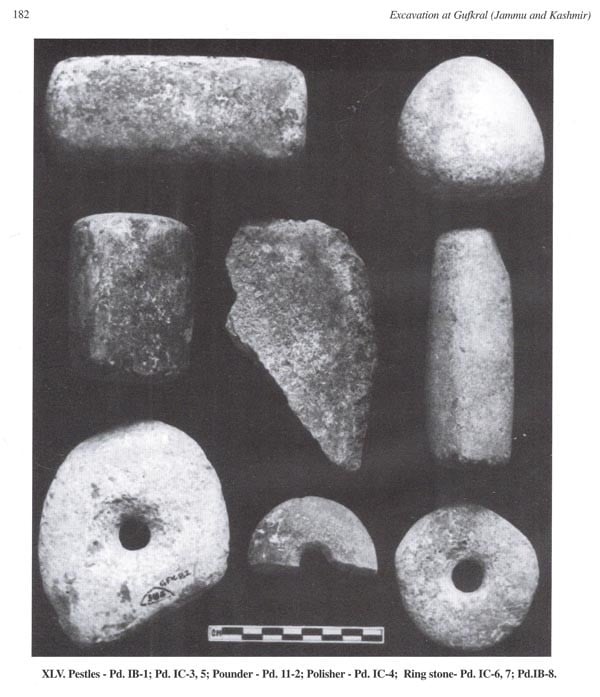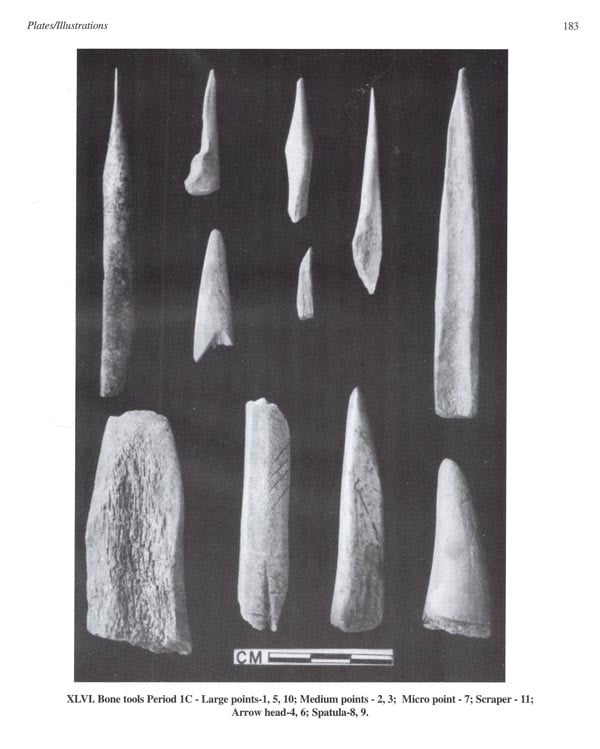
Excavation At Gufkral- Jammu and Kashmir
Book Specification
| Item Code: | AZE645 |
| Author: | A.K. Sharma |
| Publisher: | B.R. PUBLISHING CORPORATION |
| Language: | ENGLISH |
| Edition: | 2013 |
| ISBN: | 9789350500972 |
| Pages: | 218 (Throughout B/w Illustrations) |
| Cover: | HARDCOVER |
| Other Details | 11.00x9.00 |
| Weight | 860 gm |
Book Description
He deposed on Ramjanam Bhoomi-Babri Masjid case, Ayodhya before the Lucknow Bench of Allahabad High Court as an expert as witness-in-chief.
He is presently engaged in two major excavations in Chhattisgarh and is Archaeological Advisor (Hon.) to the Government of Chhattisgarh.
He is a member of the Standing Committee of Central Advisory Board of Archaeology.
1 is also grateful to the M/s B.R. Publishing Corporation, New Delhi for publishing this book in record time.
The uncertainty which hangs about the glacial and interglacial periods in Kashmir region need not discourage us from estimating the existence of Man in the region, which has so far been estimated to go back to 5,000,00 years from now, which may well be the earliest in Asia. The progress of man from hunter-gatherer to new heights of civilization is all represented in the evidence from Jamma, Kashmir and Ladakh. Excavations at Burzahom and Gufkral have actually traced Man's progress from hunter-gatherer to pastoralism to settled agriculturist's life and through radiocarbon dates the beginning of agriculture and domestication of animals have been found to begin sometime in the beginning of the third millennium BC. This discovery was a difficult task as in Kashmir there are no parallel evidences existing now amongst the tribal societies unlike in the rest of the country where prehistory merges with ethnography, since the people in such regions still live in the state of primitive culture. In Jammu and Kashmir, the flow of people from other areas has been so numerous that nothing of prehistoric past in the present day population has survived. The earlier inhabitants were completely overpowered by the new corners, especially in Protohistoric, Early Historic and Historic times. From the prehistory point of view much of Jammu, Kashmir and Ladakh still remain to be explored, excavated and scientifically reported. This kind of research for the region is not yet organized. Our political, leader’s cry, often from house tops the necessity of bringing the region nearer to the mainstream of the country, which was already there right from the Stone Age, but hardly anything is being done to help the experts and researchers who are eager to work in the region. To quote Sankalia again from his book The Prehistory and Protahistory of India and Pakistan "The cultural unity of India is evident right from the Stone Age as almost everywhere the same sequence of Stone Age Industries could be had. This would certainly point to a kind of sameness in material culture".
**Contents and Sample Pages**
